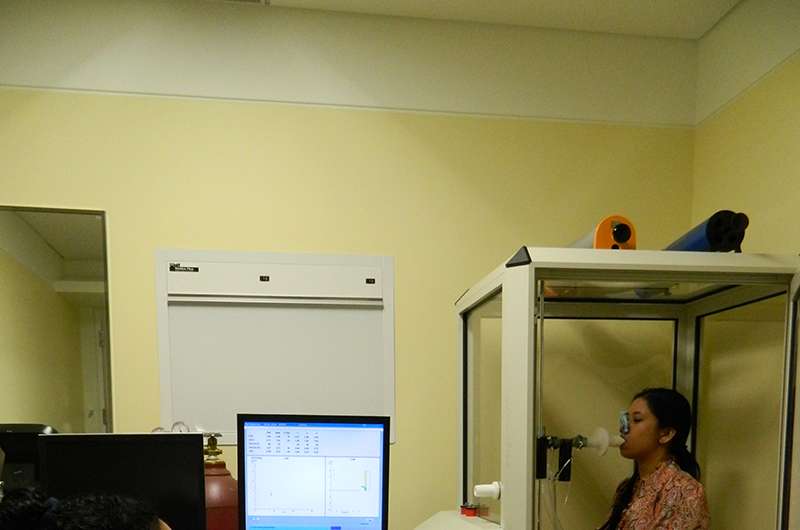Lung test finds 'healthy' smokers at risk for COPD

A noninvasive and quick lung-function test frequently used to evaluate whether or not a smoker is at risk for developing pulmonary disease is likely mislabeling a significant percentage of smokers as healthy, a research team led by Weill Cornell Medicine investigators suggests.
A more specialized but still noninvasive test can more accurately represent this risk, the researchers found in a new study, published Nov. 5 in the European Respiratory Journal. If used more widely, doctors will be able to better predict who will develop chronic obstructive pulmonary disease (COPD), a condition defined by obstruction to expiratory airflows that makes breathing difficult. COPD, which includes smoking-induced emphysema, chronic bronchitis and nonreversible asthma, is the third-leading cause of death in the United States and affects more than 20 million people nationwide. While it is a condition caused by smoking, only 20 percent of smokers develop it. Based on this information, investigators sought to determine a way to better predict who might be affected.
"We wanted to figure out an accurate way to detect who is most at risk so that doctors can intervene earlier," said Dr. Ronald Crystal, chairman of the Department of Genetic Medicine and the Bruce Webster Professor of Internal Medicine at Weill Cornell Medicine. "We found that a more comprehensive test works better, and using it will ensure that doctors aren't giving smokers a false sense of confidence that their lung function is normal."
The conventional lung function test, called spirometry, is widely available and can be performed in about one minute at a general practitioner's office. To take it, patients are instructed to inhale deeply and then blow out as hard as they can into a tube-like instrument. If less than 70 percent of air is blown out in that first second, and this ratio cannot be corrected by drugs that open up the airways, called bronchodilators, then the patient has COPD.
"The problem with the spirometry test is that it doesn't give you the whole picture of lung function," Crystal said. Which is where the second, more comprehensive capacity diffusing test, which measures the function of a patient's air sacks, comes into play.
"If you think of the lung like an upside down tree, the trachea, or windpipe, is the trunk, the branches are the airways and the leaves are the air sacks," Crystal explained. "With smoking, those air sacks can be destroyed, and the diffusing capacity test measures their function."
Although it is similarly noninvasive, the diffusing capacity test is less portable, more expensive and more difficult to run. For this reason, it is typically only used by pulmonologists.
To find out whether low-diffusing capacity levels correlated with an increased risk for developing COPD, investigators compared two groups of smokers – one with normal diffusing capacity levels and one with low diffusing capacity levels – all pulled from a larger pool of 1,570 New York City-based smokers with normal spirometry measures.
Once divided into these groups, researchers randomly selected 59 people with normal diffusing capacity and 46 people with low diffusing capacity and followed them for about four years. Throughout this time, investigators ran sporadic lung function tests. All participants continued to smoke throughout the study, and most were about 50 years old, the typical age at which symptoms of lung disease appear.
While the vast majority of participants – 97 percent – with both normal spirometry tests and normal diffusing capacity stayed COPD-free over the four-year term, the researchers found that nearly one-quarter, or 22 percent, of people with the low diffusing capacity developed COPD during the study.
"This shows that smokers with normal spirometry results but low diffusing capacity are at significant risk for developing this serious and fatal disease," Crystal said.
It also means that many people who have normal spirometry results but never see a specialist or receive the diffusing test are being falsely told not to worry and that they're okay, Crystal continued.
"Even with a normal spirometry test, patients and their doctors still have to worry that they may be at significant risk for developing COPD."
More information: Ben-Gary Harvey et al. Risk of COPD with obstruction in active smokers with normal spirometry and reduced diffusion capacity, European Respiratory Journal (2015). DOI: 10.1183/13993003.02377-2014



















